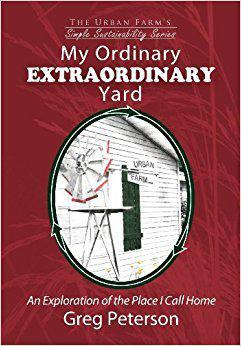House Grass to Home-Grown:
Transforming Lawns into Edible Gardens
By Kari Spencer
Are a carton of juice, a head of lettuce or a bouquet of flowers on your shopping list? Most folks will run to the grocery store for such items, but have you ever considered producing some of these everyday food staples at home? Some of your neighbors may be doing just that. From backyards and front lawns to patios and fire escapes, there is a growing worldwide trend to convert outdoor spaces that have been traditionally empty or strictly ornamental to vegetable gardens and urban mini-farms.
For homeowners and renters alike, many city-dwellers have inherited a yard, a balcony or patio from the previous occupant. Often, these visible outdoor areas are homogenous, cookie-cutter spaces, where neatly-trimmed grass or a few well-placed flower pots are admired and appreciated by the neighbors. But for some innovative gardeners, a feast for the eyes is not enough. They want something edible in return for their hard work, the water and the expense of tending a landscape. These food revolutionaries are maximizing their cultivation area by converting landscapes, patios, and nearby vacant lots into productive edible gardens. In the quest for more space to grow food, even conventional front lawns are being transformed into maverick, and highly visible, vegetable plots.
What compels these gardeners to roll up their sleeves and become front yard farmers? Many are motived to save money at the grocery store by growing their own fruits and vegetables. Organic or natural growers view vegetable gardening as a method to eliminate pesticides and genetically modified organisms from their diet. Some gardeners are driven by a desire to eat more locally, and what could be more local than stepping out of your own door for produce? Others simply want a greater connection to nature and to the source of their food, enjoying the experience of sowing seeds and nurturing them as they grow. Satisfaction is derived not only from the harvest, but from the very process of tending and cultivating the garden. If their backyard is too small or shaded to grow what they need, the garden may begin to spill onto the front yard.
Though publicity is given to highly energetic gardeners who devote their entire front lawn to growing food, not everyone is so ambitious. Front yard gardens take as many forms as there are front yard gardeners. Some are satisfied to grow a small lettuce bed or a border of edible flowers. Other approaches are growing a stand of fruit trees, replacing a fountain with an herb spiral or hanging a row of baskets overflowing with strawberries instead of flowers. For gardeners who desire ample growing space but don’t want to take out their grass completely, a few raised beds as well as the lawn are becoming an increasingly common site. The configuration of the garden depends on how much time and money the gardener wants to spend, as well as their preference for the type of appearance that they want to display.
If visions of an edible estate are making you anxious to get started creating your own front yard farm, be sure to check with your city codes and HOA rules before tilling up the lawn. Some municipalities discourage, or even ban, front yard vegetable gardens. It would be a shame to go to the trouble of creating a garden, only to have to undo it later, as has occurred in a few high profile cases nationally.
In areas in which the law prohibits growing food in the front yard, a subtle approach and a little creativity can make it possible. Undercover gardeners might consider growing a few unobtrusive vegetables in pots near the front door or hanging baskets of bushy tomatoes from the porch. Herbs, greens, and lettuces can be discreetly interspersed amongst flowers to create an attractive border. Fruit trees can replace shade trees, and ornamental shrubs can be swapped for edible rosemary or blueberry bushes. Sweet potatoes and oregano make attractive ground covers. There are many ways to expand gardening space into the front yard without the tell-tale rows or raised beds.
If your neighborhood doesn’t allow front yard gardens, perhaps you can be the catalyst for your community. As the stories of renegade front yard farmers are becoming public and interest in gardening grows, a groundswell of public pressure is rising in favor of gardening rights. Zoning ordinances across the country are gradually changing to support urban agriculture in its many forms. Most of all, if you are inspired to convert your own lawn to food, jump in, start small or start big, but most of all just start. Grow food however you are able, and enjoy the benefits and satisfaction of having fresh produce from your very own front yard.
Kari Spencer is a Master Gardener volunteer and the founder of The Micro Farm Project, a tiny urban farm in the heart of Phoenix, AZ. A former elementary school teacher, she currently enjoys teaching adults, spreading her passion for gardening, cooking and small livestock. She shares the farm with her husband, Lewis, their four daughters, and a host of chickens, turkeys, sheep, goats, rabbits and quail. Check out her blog







